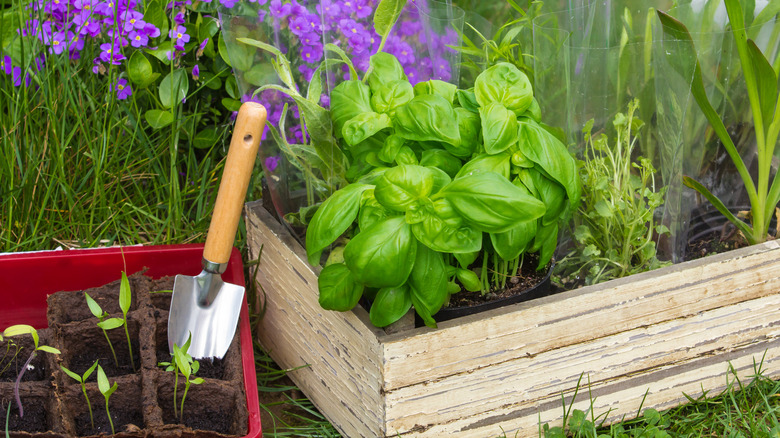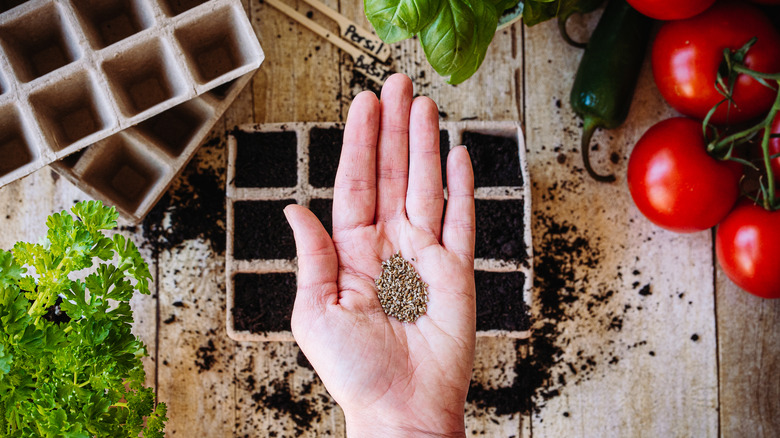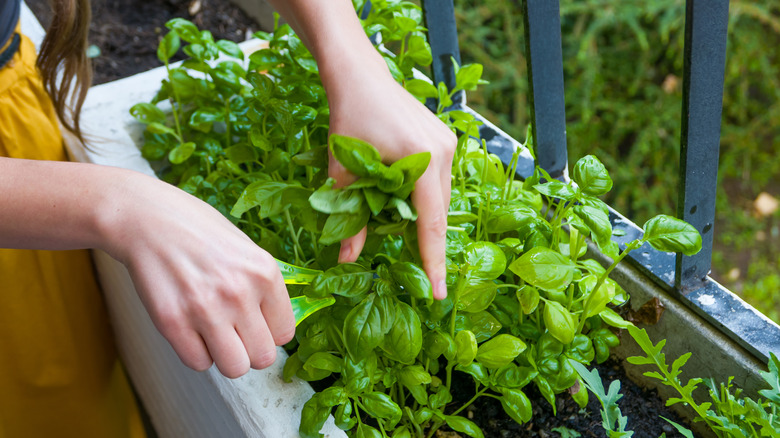The Best Time Of Year To Plant Basil In Your Garden For A Flavorful Harvest
With a sweet and savory flavor, bright green foliage, and many versatile uses, basil is one of the most delightful herbs to grow in your backyard garden. Unfortunately, figuring out when you should plant basil for optimum growth and flavor can feel like a mental puzzle in and of itself. Plant basil too soon, and a sudden frost is likely to destroy your crop, but plant it too late, and the sizzling summer sun can scorch those tender leaves in a heartbeat. Basil needs about six to eight hours of bright sunlight every day and will thrive in temperatures between 50 and 80 degrees Fahrenheit with humidity hovering around 40% to 60%. In truth, there really is no right or wrong time to plant basil, so long as you're close to these ideal environmental conditions.
Of course, the best time to grow basil can really depend on your location, so it's important to understand your USDA hardiness zone to estimate when the climate will be suitable. Here's when you should plan to plant your basil and how to keep it growing for optimum flavor.
Know your zones
One of the best ways to determine when to plant basil is to discover your USDA Plant Hardiness Zone. In zones 3 and 4, you can start your basil seeds indoors in early April or outdoors in early May, then plant seedlings in the garden at the end of May. In zones 5 through 7, you can start the basil seeds a little earlier, around early March indoors or April outdoors, then plant at the end of May. Zones 8 and 9 tend to be quite warm, so it is safe to start the basil seeds as early as January or February indoors and plant them around the beginning of March, after the final frost of the season has passed.
In zones 10, 11, and beyond, it's actually better to skip planting basil during the spring and summer seasons. You'll have better luck waiting until October to start the seeds indoors, then planting outdoors around the first of December and harvesting throughout the winter. Frost is rare in zones 10 and 11, so there's a good chance you can enjoy harvesting basil here all winter long and freeze or dry the fresh leaves for use throughout the summer. Keep in mind that different types of basil plants may also be more hardy in your area, so research to determine which variety will bring you both the flavor you crave and good environmental durability.
Encourage the perfect flavor profile
Planting your basil at the right time is key to ensuring a healthy harvest, but that doesn't mean you should just set it in the soil and forget it. There are more gardening techniques you should know in order to get the sweetest, most flavorful basil leaves. If you notice flowers blooming on your basil, admire them for a moment, then quickly snip them off! If basil plants are allowed to mature to "go to seed," they can become surprisingly bitter. Be sure to water your basil evenly and consistently, — about 1 inch of water once per week — since too much or too little water can also affect its flavor.
When you harvest basil, take the newer, tender leaves from the upper tiers or snip off the stem of the upper portion of the plant entirely. It's best not to harvest the lower leaves, as these won't grow back once they're plucked. Don't worry; the basil plant will recover and grow more leaves as long as you leave at least two-thirds of the plant intact. In fact, the more you harvest, the more it will grow, and the better your basil will taste. Basil plants need regular pruning about every three to four weeks to stay sweet and prevent flowering.


